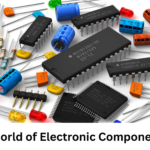In the fast-paced world of the electronics industry, companies face a myriad of supply chain risks that can impede production, tarnish brand reputations and obliterate profit margins. Being proactive in identifying and managing these risks is crucial. By leveraging a platform to manage supply chain risk, businesses can ensure a more resilient and responsive supply chain. Let’s dive into the top five supply chain risks in the electronics industry and explore effective strategies to mitigate them.
Global Supply Chain Disruptions
The modern supply chain is a global network that’s highly susceptible to disruptions from geopolitical tensions, natural disasters or pandemics. When one link in the chain breaks, it can have a ripple effect, causing delays and skyrocketing costs. To navigate this, businesses can leverage a platform to manage supply chain risk, diversify their supplier base to avoid reliance on a single source, and invest in robust supply chain management tools that offer real-time visibility and predictive insights.
Anticipating potential global disruptions can position electronics companies to stay agile in the face of unforeseen events. Key strategies include establishing a control tower to monitor for early warning signals of supply chain disruptions and conducting regular risk assessments. By utilizing scenario planning and stress-testing the supply chain, organizations can develop contingency plans that allow for a swift response, minimizing the impact on operations.
Enhancing resilience against global supply chain disruptions also involves strategic inventory management. Companies in the electronics industry can maintain safety stocks of critical components and invest in dual-sourcing strategies to mitigate risks associated with sole-sourcing. Additionally, embracing digital transformation can provide better control over supply chain networks, enabling predictive analytics to anticipate and manage potential disruptions more effectively.
Counterfeit components
Another looming risk in the electronics industry is the infiltration of counterfeit components into the supply chain. These can severely compromise the quality and safety of electronic products. To combat this, companies should implement stringent supplier verification processes and employ advanced inspection and testing technologies. Building long-term partnerships with reputable suppliers can also significantly reduce this risk.
Education and awareness are additional layers of defense against counterfeit electronic components. Companies should invest in training programs for procurement teams and install certification requirements for suppliers. Adherence to international quality standards like ISO and industry-specific certifications can also be mandated to ensure the integrity of components within the supply chain.
Regulatory compliance challenges
With electronics manufacturing spread across the globe, navigating the complex web of regulatory requirements becomes a daunting task. Non-compliance can lead to hefty fines and operational setbacks. Companies should stay ahead by closely monitoring regional and international regulatory developments, utilizing compliance management software, and engaging in industry associations that offer valuable insights and advocacy.
Adapting to an ever-changing regulatory landscape means that stakeholders must frequently engage in educational workshops and seek guidance from legal and industry experts. Establishing an in-house compliance team or hiring external consultants to navigate through the myriad of regulations can help businesses adapt to changes more swiftly and ensure that all processes remain above board and within all legal frameworks.
Cybersecurity threats
The digitization of the supply chain, while offering numerous benefits, also opens up new avenues for cyberattacks. These can disrupt operations and compromise sensitive data. Ensuring robust cybersecurity measures across the supply chain, including access control, data encryption and regular system updates, is essential for protecting business operations and maintaining trust.
Shifting consumer demands
The electronics industry operates in a market characterized by rapidly changing consumer preferences and technological advancements. The ability to remain flexible and quickly adapt to market demands is a significant challenge. Adopting a lean manufacturing approach, investing in advanced analytics for accurate demand forecasting, and fostering a culture of innovation can help companies stay ahead of the curve.
In conclusion, navigating the supply chain risks in the electronics industry requires a strategic approach underpinned by the latest technological solutions and a deep understanding of the global supply chain dynamics. By implementing the strategies outlined above, companies can not only mitigate these risks effectively but also gain a competitive edge in the ever-evolving electronics market.








